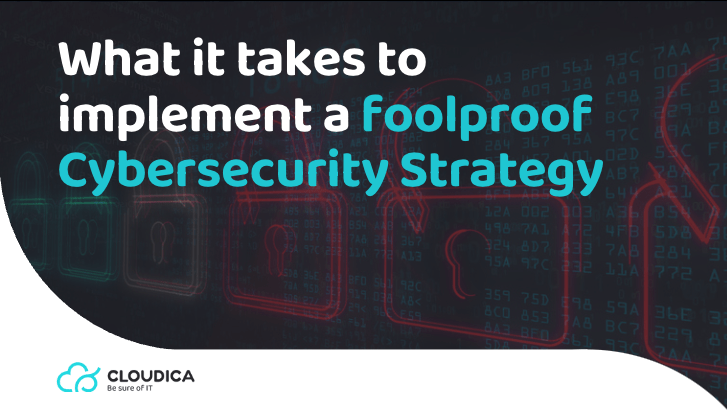By Krzysztof Stefański, Chief Technology Officer at Cloudica
The digital age has changed the way businesses operate, offering immense potential for growth and efficiency. But this potential is also accompanied by several security risks. In order to protect their data and assets, organizations must implement a foolproof cybersecurity strategy that covers every aspect of their operations.
As a CTO, I understand the importance of cybersecurity and the risks associated with not having an effective strategy. This article will give an overview of the key parts of a foolproof cybersecurity strategy and give tips on how to implement it in your organization.
Understanding the Cybersecurity Landscape
The first step to implementing a foolproof cybersecurity strategy is to understand the current landscape. This includes familiarizing yourself with the latest threats and vulnerabilities, as well as the tools and processes needed to protect your organization.
It’s important to determine the scope of the threats you may face. Are the threats internal or external? Are they related to data breaches, malware, or phishing attacks? Are they targeted at your company’s infrastructure, systems, or data? Understanding the scope of the threats you face will help you develop a comprehensive cybersecurity strategy.
Creating a Cybersecurity Roadmap
Once you have a better understanding of the threats you face, the next step is to create a cybersecurity roadmap. This roadmap should outline the steps you need to take to protect your organization from potential risks. It should include specific objectives, such as implementing security policies and procedures, setting up monitoring systems, and developing a response plan.
The roadmap should also include a timeline for achieving each objective. This will help you stay on track and ensure that your cybersecurity strategy is implemented in a timely manner.
Establishing Cybersecurity Policies and Procedures
The next step in implementing a foolproof cybersecurity strategy is to establish policies and procedures. These policies and procedures should include guidelines for employee behavior, such as identity management, data handling, and online security.
It’s also important to develop guidelines for handling breaches and other security incidents. These guidelines should include procedures for responding to threats, identifying risks, and mitigating damage.
Implementing Security Technologies
In addition to policies and procedures, it’s also important to implement security technologies. This includes tools such as firewalls, intrusion detection systems, malware protection, and encryption.
The specific technologies you choose will depend on the size and scope of your organization. It’s important to research each tool and ensure that it’s compatible with your systems and meets your security requirements.
Training and Educating Employees
One of the most important elements of a foolproof cybersecurity strategy is training and educating employees. Employees must understand the risks and be aware of how to protect the organization from potential threats.
Training should include an overview of common threats, such as phishing, malware, and data breaches. It should also cover topics such as authorization management and data handling.
Conducting Regular Risk Assessments
The final step in implementing a foolproof cybersecurity strategy is to conduct regular risk assessments. This will help you identify potential vulnerabilities and take steps to mitigate them.
Risk assessments should include an analysis of the current threats and the tools and processes you have in place to protect your organization. This analysis should be conducted on a regular basis so that you can stay abreast of potential threats and take appropriate action.
Conclusion
Implementing a foolproof cybersecurity strategy is essential for protecting your organization’s data and assets. It requires a thorough understanding of the current situation, the creation of a cybersecurity road map, the creation of policies and procedures, the implementation of security technologies, employee training, and regular risk assessments. With the right plan, you can make sure that your organization is safe from any possible threats.




